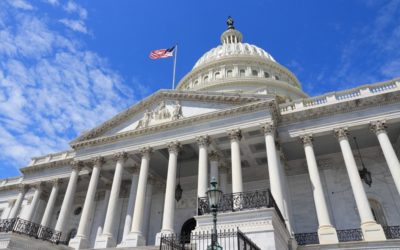The Setting Every Community Up for Retirement Enhancement (SECURE) Act was signed into law in December 2019 and outlined several changes to how retirement plans are required to operate. This article will discuss some of the significant provisions of this legislation. While adopting certain changes is optional, others do need the plan sponsor to make plan document amendments.
5 Retirement Plan Changes
- Employers with 100 or fewer employees are now eligible for a tax credit for establishing a plan, including automatic enrollment or adding automatic enrollment to an existing plan. The credit is $500 per year for three years. These employers are also eligible for a tax credit of up to $5,000 for start-up costs of adopting a new retirement plan. This credit was in place previously, but the limit was $500.
- Part-time employees are now eligible to participate in 401(k) plans. Previously, eligibility to participate in a 401(k) plan was typically based on completing 1,000 hours of service. Now eligibility has been expanded to include long-term, part-time employees who work at least 500 hours in three consecutive 12-month periods. Employers are not required to make matching contributions for these employees; however, if employer contributions are provided, vesting is based on completing 500 hours of service.
- Plans using a qualified automatic contribution arrangement can now increase the automatic escalation to 15%. The limit previously was 10%.
- The beginning age for required minimum distributions (RMDs) was delayed from age 70 ½ to age 72. The exception for working non-owners was retained
- Generally, distributions from a retirement plan or IRA are subject to a 10% early distribution penalty if made before age 59 ½. However, early withdrawals of up to $5,000 for expenses related to the birth or adoption of a child are no longer subject to this penalty.
CARES Act Modifications
On March 27, 2020, the Coronavirus Aid, Relief and Economic Security (CARES) Act was passed in response to the global pandemic. This legislation also included several provisions that affected retirement plans and made it easier for participants to take coronavirus-related distributions. Some of those provisions are as follows:
- The 10% early withdrawal penalty is waived for distributions up to $100,000 taken before December 31, 2020. Any taxes on the distribution can be paid over three years, or the distribution can be repaid to the plan over the same three-year period with no tax consequences for the amount repaid.
- The maximum amount of a loan was increased to the lower of $100,000 or 100% of the participant’s vested account balance (previous limit was $50,000 or 50% of the participant’s vested balance).
- However, the loan had to be initiated before September 22, 2020 (180 days from the date the law was passed) to take advantage of these higher limits. After this date, loans initiated are still subject to the original limitations (lower of $50,000 or 50% of the vested account balance).
- Participants with loans outstanding and amounts due as of the date of the CARES Act through December 31, 2020, can defer payments for up to one year. However, interest will still accrue on any outstanding balance.
- Plans can suspend making RMDs for 2020.
Questions about Retirement Plan Changes?
It is essential to carefully review plan documents and operations to ensure the proper amendments have been made. If they have not, it is crucial to immediately address open issues to ensure there are no complications with your annual retirement plan audit. If you have questions or need assistance with your retirement plan, Smith Schafer can help.




